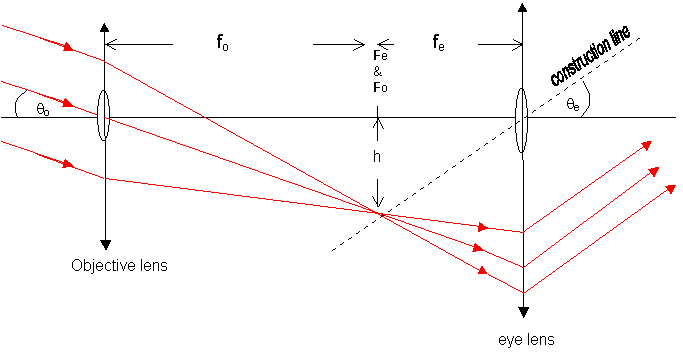
Consists of two converging lenses:
Needs a ray diagram to explain – revise ray
diagrams.
General points:
o Rays from a distant object (like a star) are always parallel – they will all be refracted through the focal plane of the “objective lens”. This is the lens that points at the star – the “eye lens” is the other lens – the one we look through.
o The two lenses have “mutual focal points” - this means that they are put at just the right distance apart so that the focal point of the objective lens is in the same position as the eye lens
o The first point (above) works in reverse – rays coming through the focal plane of the eye lens will be refracted parallel to a ray through the centre of the lens.
o The eyepiece works like a magnifying glass – with the image at infinity

Angular magnification in normal
adjustment

This can be related to the focal lengths of the lenses:
Look at the above diagram again – for angles qo and q
| M = | = |  |
|||||
 |
Do question 4.6 from P. 49 - Ingham
List
the limitations of a refracting telescope – P. 50 – Ingham.
Example
question: a telescope has an objective lens with a focal length of 100cm and a
diameter of 5cm. If the eyepiece
has a focal length of 20cm and the telescope is used in normal adjustment,
calculate
a.
the magnifying power